I’m thinking about starting a column based on doing crafts with my grands. I think it’s a wonderful way to connect, have conversations and do something creative together – when we’re not out creeking, hiking, fishing, looking for mushrooms, shooting hoops or playing tag. So, on a recent trip to the East Coast, my two grandchildren (ages 13 and 11) enjoyed making flower frogs from air-dry clay.
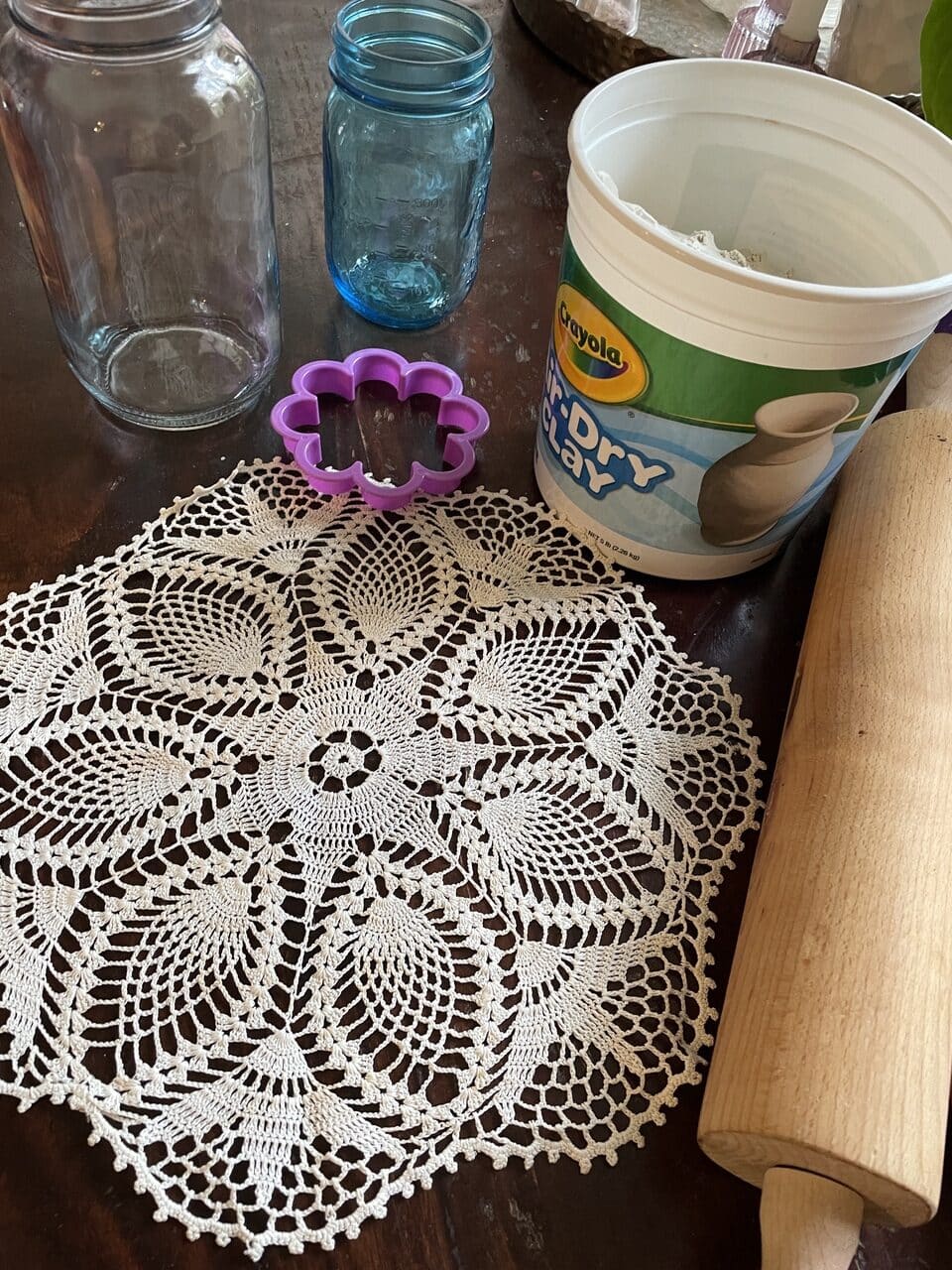
The kids rolled balls of clay out with a rolling pin, then cut shapes that would fit on top of a Mason (or Ball) jar. If you have a vase in mind that you want to use, definitely put that out so you can measure the size of the “frog.” Of course, the clay needs to be a bit wider than the mouth of the jar or top of the vase.
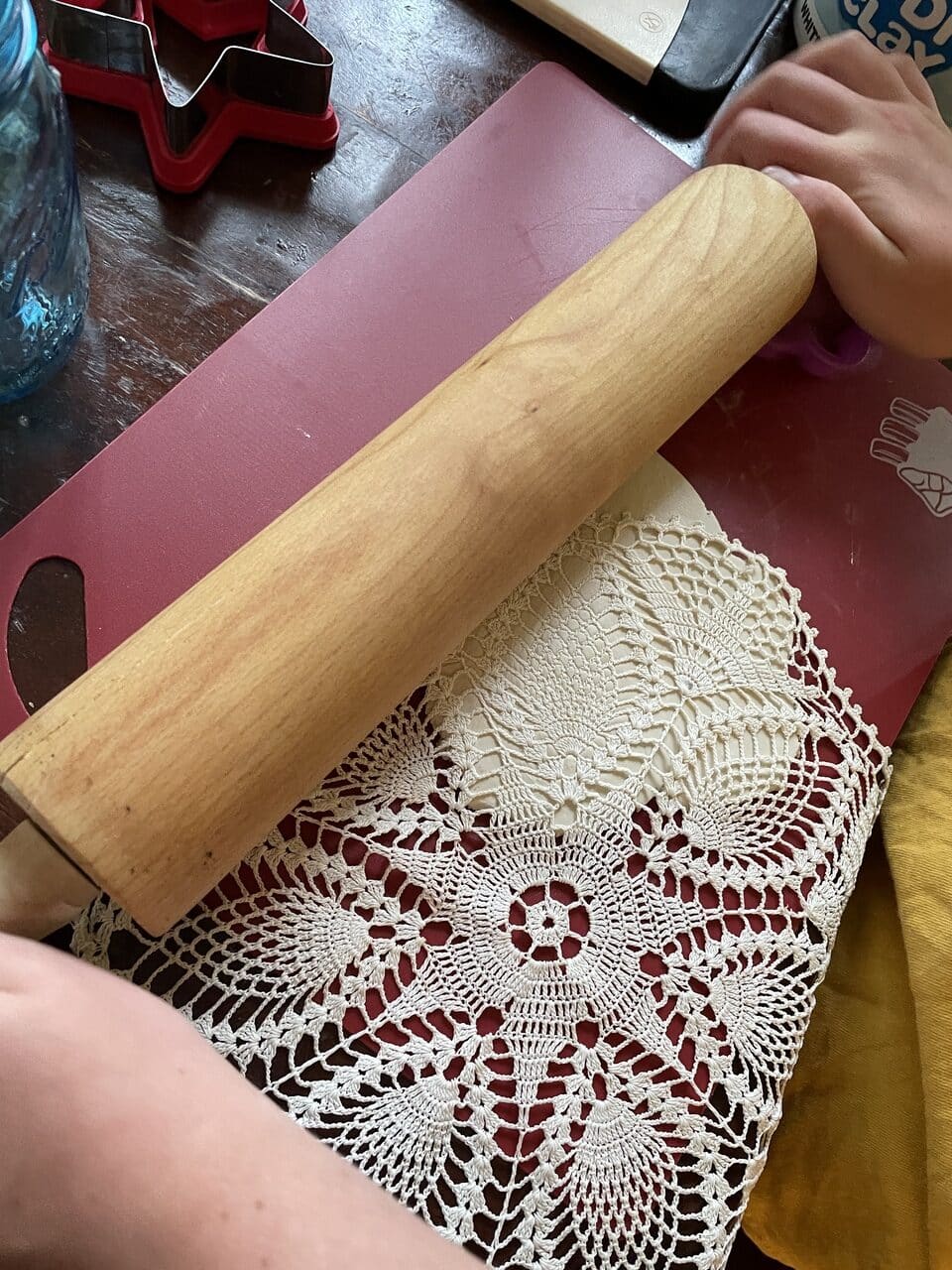
If you want to add a flourish or embellishment, use either a doily, or I have seen people use strips of lace laid across the clay.
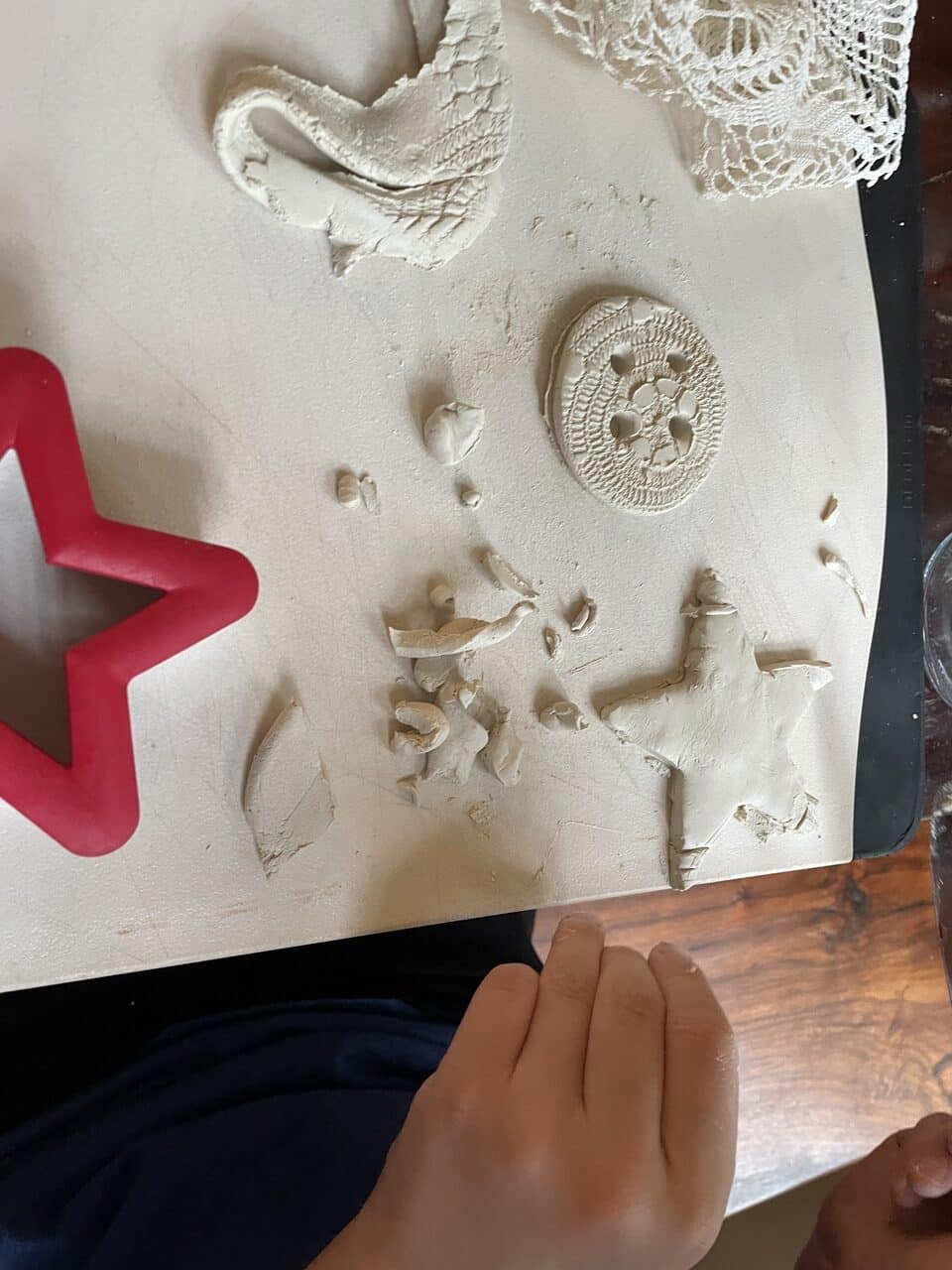
Then, use the rolling pin to make the design in the clay. Next, pick up a cookie cutter or jar, cup, bowl to press into the clay and cut it. Take a blunt knife to trim, and use a spatula to lift and place on a drying tray. Poke holes in the frog with a straw.
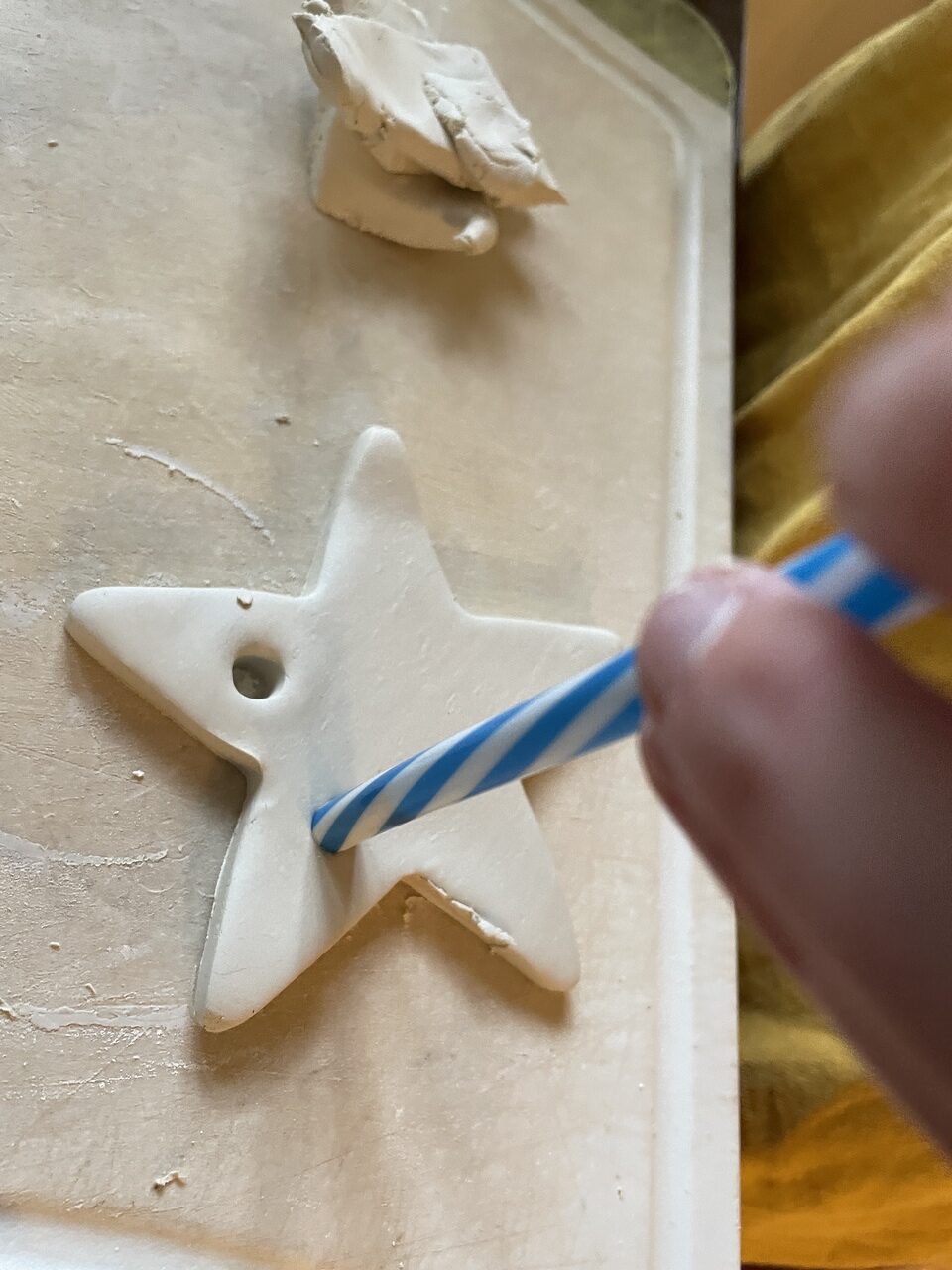
Let the clay dry thoroughly, and then, paint with spray paint or acrylic paints. If you want, you might want to add a protective finish coating, such as an art spray.
A flower frog dates back to 14th century Japan, as an aide in flower arranging to spread out the flower stems. According to Martha Stewart, frogs were used in the type of flower arranging called ikebana. Stewart writes that the Japanese didn’t invent the name “frog” for them, but that the term evolved throughout the years because a flower frog sits on top of water.
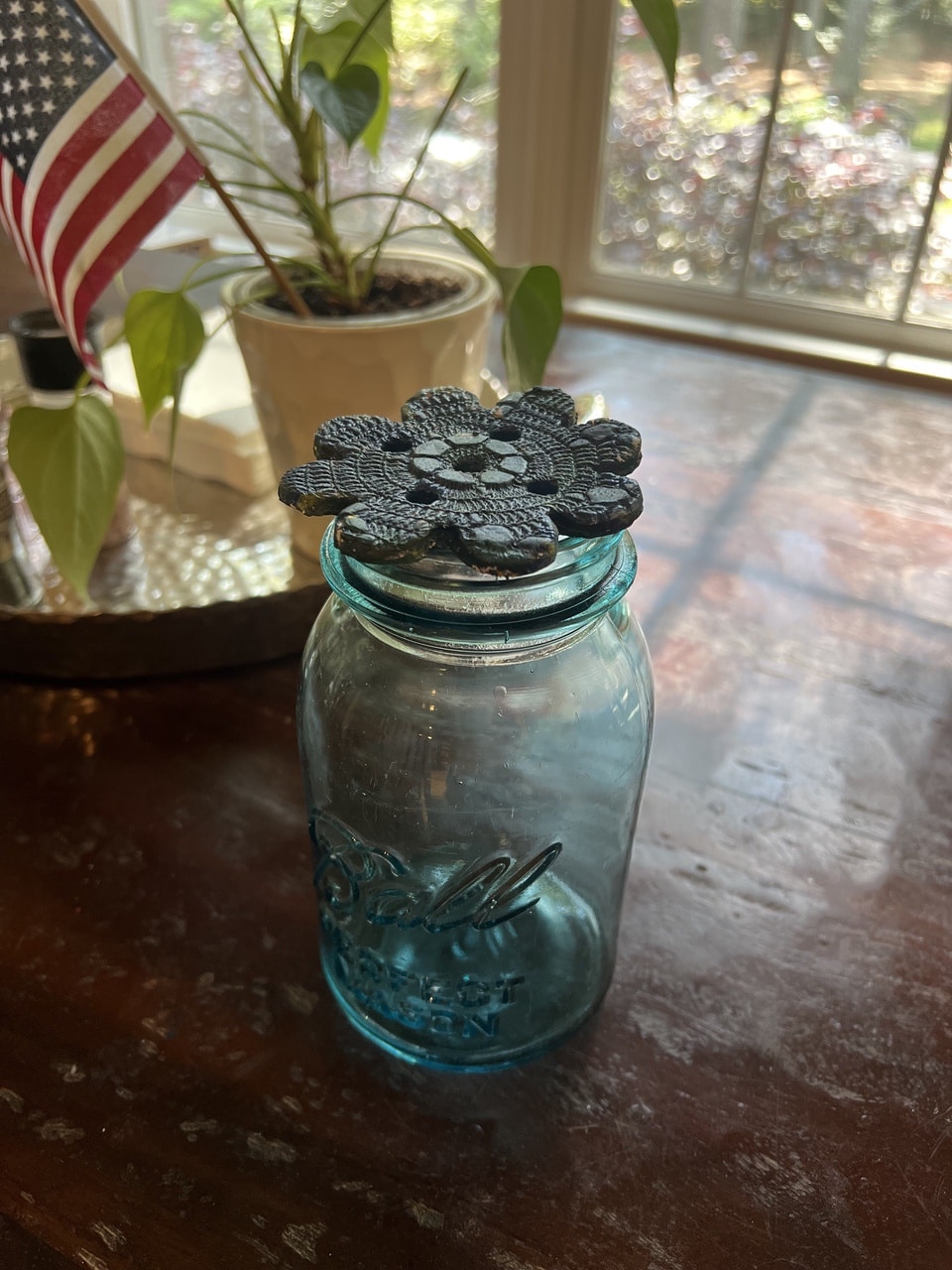
These air-dryed clay frogs are just one medium in a vast line, which can include glass, metal, ceramic and plastic. My daughter and I love to search for Victorian flower frogs in antique shops.
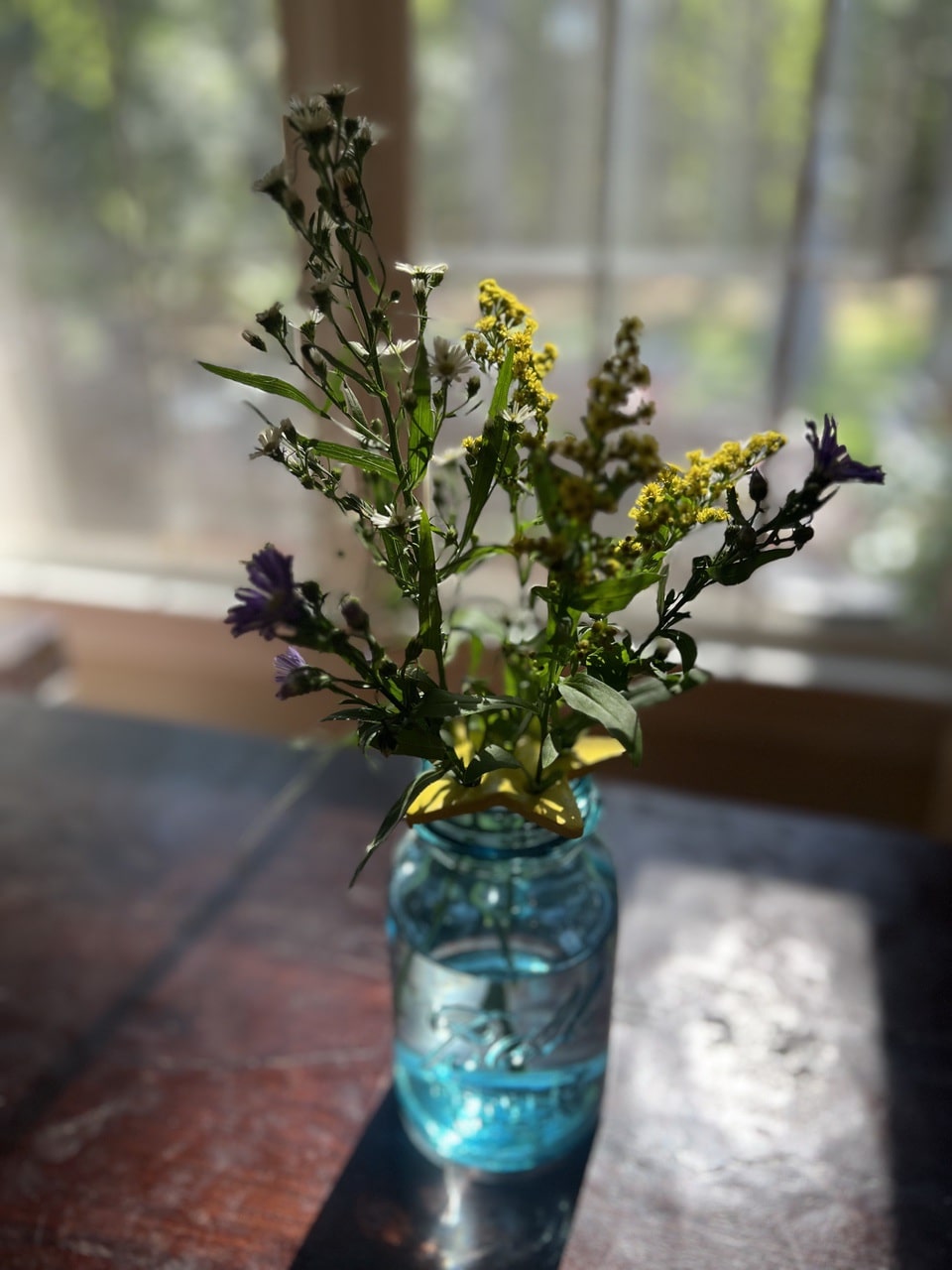
Air-dryed clay frogs would make sweet gifts for grandparents and other relatives, especially if the gift included a lovely blue Mason or Ball jar, and some cut flowers.
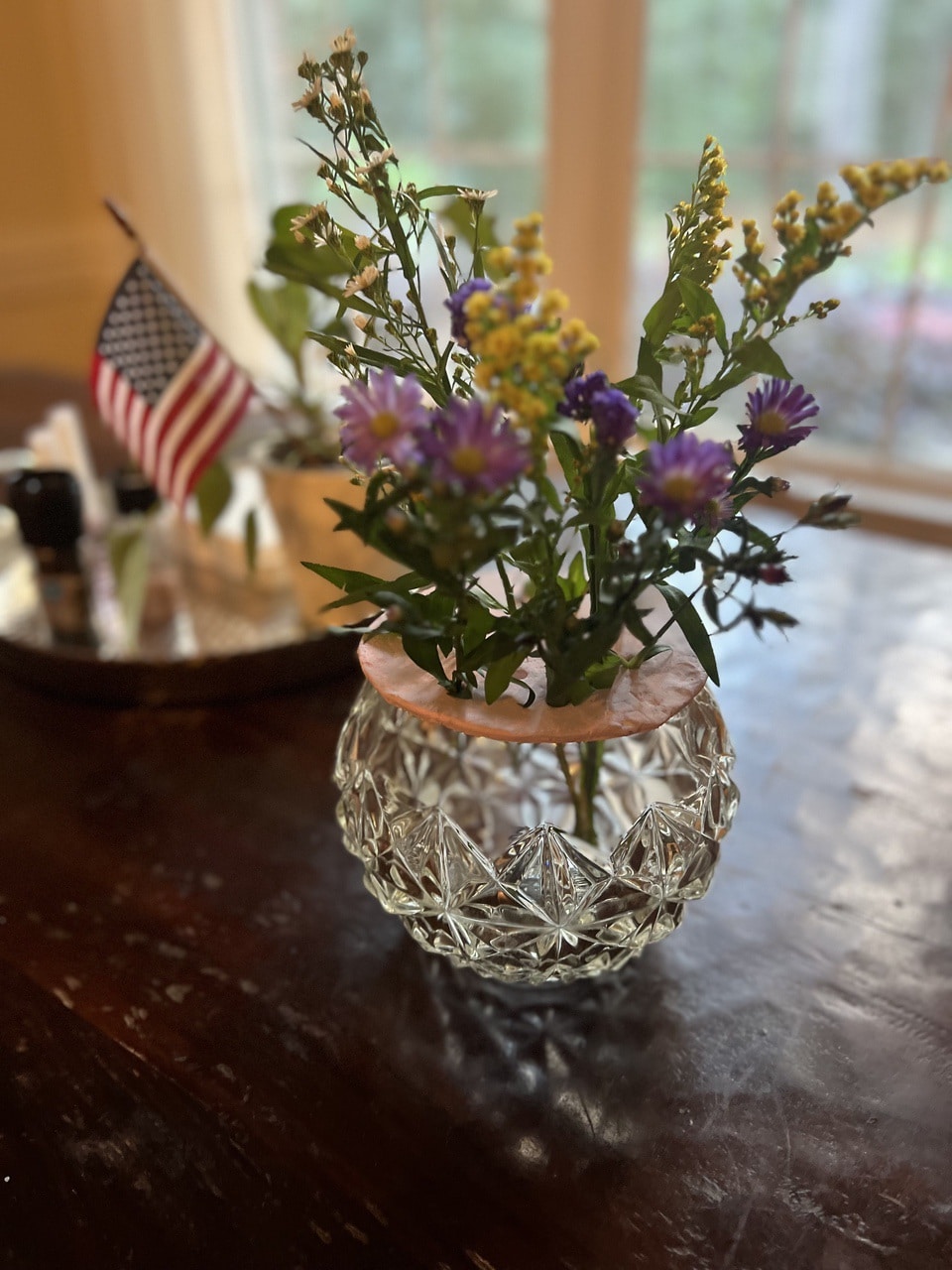
Publisher/Editor Barbara Baird is a freelance writer in hunting, shooting and outdoor markets. Her bylines are found at several top hunting and shooting publications. She also is a travel writer, and you can follow her at https://www.ozarkian.com. View all posts by Barbara Baird